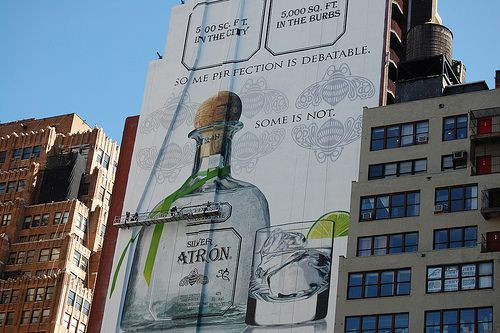Alcohol Ads Targeting Too Many Young People: Which Programming Is Most Guilty?

The era of Fred Flintstone sharing a Winston cigarette with his wife Wilma, on primetime TV, is over. Cigarette ads have been banished from television, and for quite some time. Meanwhile, alcohol ads — though swamped with regulations — continue to thrive on all major networks, and researchers are now directing the same efforts as in past attacks on tobacco. A new study argues that alcohol ads are reaching too many young people, putting them at greater risk for early consumption.
In 2003, the alcohol industry set a voluntary standard that dictates alcohol companies can’t air ads for their products during shows where more than 30 percent of the viewing audience is younger than 21 years old. The present study found that in 25 of the largest U.S. television markets, nearly one in four advertisements airing during programming most popular with youth audiences exceeded these standards.
Houston, the greatest offender in the study, exceeded the standard in nearly a third of all its programming (31.5 percent). In other words, all a city has to do to violate the standard is to allow one alcohol company to air one ad during one show where 30 percent of the audience is under 21. Out of the city’s 7,862 total ad occurrences, Houston violated the standard 2,476 times. Washington D.C., the best performer of all the markets studied, still violated the standard 16.3 percent of the time.
"Underage drinking harms teens, their families and their communities," said CDC Director Dr. Tom Frieden in a statement. "Exposing teens to alcohol advertising undermines what parents and other concerned adults are doing to raise healthy kids."
Researchers from the Center on Alcohol Marketing and Youth (CAMY) at the Johns Hopkins Bloomberg School of Public Health carried out the study. They used 2010 Nielsen data to look at alcohol ad placement among the 10 programs that youth viewers watched the most. The team assessed ad placement within each of four program categories: network sports, network non-sports, cable sports, and cable non-sports. Nationally, network non-sports represented the largest share, at 29 percent of youth exposure to alcohol ads. Behind it were network sports (20 percent), cable sports (20 percent), and cable non-sports (14 percent).
The 25 markets involved in the study comprise roughly half of the total U.S. population aged 12-20 years living in homes with televisions. And if the advertising exceeding the 30 percent threshold were removed, without replacement, the study suggests, total youth exposure to alcohol ads would drop by one-third.
Study author and CAMY Director Dr. David Jernigan pointed to systemic failures within the alcohol industry as the underlying cause for concern.
"This study indicates that the alcohol industry's self-regulation of alcohol advertising could be improved," he said. "The potential public health pay-off in terms of reduced risk of underage drinking and harms related to it could be quite substantial."
A study conducted earlier this year, published in Pediatrics, showed that students who watch alcohol ads as early as 7th grade face a greater chance for beginning consumption by the time they reach 8th or 9th grade. By 10th grade, students were more likely to face alcohol-related problems, such as fighting or academic decline, according to lead researcher Dr. Jerry Grenard, associate professor at Claremont Graduate University.
"Examples of problems include failing to do homework, attending school drunk, passing out, and getting into fights," Grenard told HealthDay. "Parents and schools should teach children about the design of persuasive messages in the media to help them avoid undue influence by the media on their behaviors.”
As the most commonly used drug among young people, alcohol accounts for an estimated 4,700 deaths among underage youth in the U.S. each year. At least 14 studies corroborate the risks of prolonged exposure to alcohol advertisements on future consumption, according to the researchers, who added that greater consumption introduces youths to the risks of car crashes, unplanned pregnancy, violence, and sexually transmitted diseases.
The present study makes a strong case for the alcohol industry to tighten its practices of self-regulation, for the sake of young viewers, Jernigan says.
"Alcohol industry codes have so far not specified whether companies should use local or national ratings data when purchasing alcohol advertising," he said. "This study suggests that by using readily-available information on the make-up of local TV audiences, advertisers could help reduce youth exposure to alcohol advertising."



























